This feature was taken from our Electric Fleet: Moving to Net Zero special report.
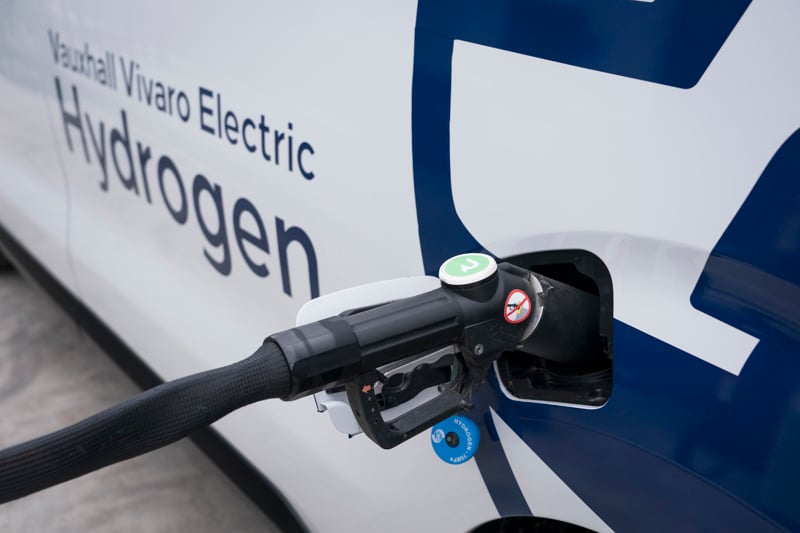
Of all the many topics within the zero-emission vehicle sector, the use of hydrogen as a fuel continues to perhaps be the most divisive one.
Advocates point to the quick refuelling times and comparable range to existing internal combustion engine (ICE) vehicles, while their efficiency is also far less affected by speed and cold weather than a battery electric vehicle (BEV), giving fleets greater confidence in operating them over the winter.
Critics cite the lack of refuelling infrastructure compared with BEVs, their relative inefficiency, and the emissions created in the production of the gas as obstacles which will be difficult and expensive to overcome, particularly as BEVs have such a huge foothold already.
All these points have merit. For example, it takes five minutes to provide the Vauxhall Vivaro Hydrogen with enough fuel for 249 miles; there are only five publicly-accessible hydrogen stations for the 400 or so vehicles on UK roads compared with more than 70,0000 public electric charge points; while the process to create hydrogen requires a lot of electricity.
“In simple terms, if you need one wind turbine to charge an electric truck, you need two-and-a-half turbines for a hydrogen truck,” says Professor Colin Herron, professor of practice at Newcastle University.
“The efficiency losses are huge. People talk about using hydrogen to store energy, but you need a lot of electricity to make the hydrogen, and then you’ve got to convert it back. It’s a very good way of losing a lot of what you want to store.”
There are also issues about getting the hydrogen to the refuelling stations. Unless it is generated on-site, it will need to be transported there as – unlike with electricity – there is no existing infrastructure to supply it.
“There are different models being looked at around the world, either transport it in liquid or gaseous form,” says Peter Crowe, European sales manager at ANGI Energy Systems. “However, once you’ve got it to the point of sale, then transposing it into the vehicle is a relatively simple thing to do.”
Hydrogen’s environmental credentials – in much the same way as how electricity is generated – is also influenced by how it is created.
The energy industry uses a colour code to describe its source: the drive is for green hydrogen, which is made by using clean electricity from surplus energy sources, such as solar or wind power, but currently the most common form of production is grey.
This is created from natural gas using steam methane reformation, and the greenhouse gases made in the process are not captured.
Massive interest
Despite all these issues and obstacles to overcome, interest in the technology remains high, not only from fleets but from Government, vehicle manufacturers and suppliers, who are investing huge sums in the technology.
For example, the UK Government will spend more than £170 million from the Net Zero Innovation Portfolio on hydrogen innovation, while specific projects include the £19m Tees Valley Hydrogen Transport Hub.
This is aimed at accelerating the adoption of hydrogen solutions within the transport sector, working towards long-term sustainable demand for hydrogen from transport and to de-risk hydrogen’s adoption for transport owners and operators.
In 2024/25, the three individual projects within the programme will install up to four hydrogen refuelling stations across the region, demonstrate around 35 hydrogen vehicles – ranging from 4.2-tonne to 19-tonne refrigerated trucks – and use a wide range of operators to show real-world use cases.
Other Government-funded trials include the Dynamn – Zero Emission Nothern Freight – and HyHaul Aggregrated UK Logistics projects.
The HyHaul initiative, which won £30m support from the Government, will see a minimum of 30 hydrogen fuel cell vehicles operating on the M4 corridor, supported by four public filling stations, by 2026.
It aims to provide OEMs and fleet operators with operational data on the performance of first-generational fuel cell trucks and help remove barriers to wider adoption across the industry. It also hopes to stimulate future demand for green hydrogen.
One similarity these trials have is that they all focus on larger trucks and HGVs, and the general industry feeling is that this is what hydrogen vehicles will be best suited for.
“I see hydrogen running quite well in that HGV space on specific routes,” says Clare Spooner, director of mobility, net zero domain at Innovate UK. “The HyHaul one is a really important project to prove whether hydrogen will work for HGVs.”
However, at the same time, Abdul Chowdhury, head of vehicle policy at the Office for Zero Emission Vehicles, admitted that, with limitations on the supply of hydrogen, priority would most likely go to the larger industrial transport sectors of maritime and aviation, which also have decarbonisation targets, rather than road transport.
Fewer compromises
Nevertheless, the technology’s attributes also make it appealing to operators of smaller vehicles, particularly those with short dwell times where there is little opportunity to charge a BEV over an extended period, such as blue light fleets, as well as van operators with demanding payload requirements: a fuel cell powertrain is lighter than a battery.
“We don’t necessarily see, for us, a market for fuel cell cars and small light commercial vehicles, but we see the choice of BEV and fuel cell necessary when it comes to medium and large vans,” says Brad Miller, head of product and pricing – LCVs at Stellantis.
“There’s a lot of reticence when it comes to large BEV LCVs (i.e. those under the 4.25-tonne derogation) at the moment. The issue is that to get to the payload of a diesel equivalent you have to go to N2 vehicle category, which brings complications.”
This includes the vehicle needing an MOT test after 12 months (rather than three years), it will be speed restricted, while tachograph regulations come into effect if the vehicle travels more than 62 miles from base.
“A lot of people are saying that by the time we get to 2030, the driving range of BEVs will be the same as they are for diesels,” says Miller. “That’s not going to happen.
“There are compromises when it comes to battery electric LCVs. With cars, you can keep making the battery bigger and hide it within the architecture of the vehicle, but you can’t do that with a van because, ultimately, you have to have payloads.
“Will BEV dominate vans? Yes it will, absolutely, but we do need a second solution and that’s fuel cell.
“As well as the reduced filling time, there’s much more consistency of distance as you don’t get the cold weather range deterioration that you do with BEVs, and the fuel cell creates heat as a by-product so you can use that to heat the cabin rather than drawing from the battery as well.”
Vauxhall has begun UK customer trials of its Vivaro Hydrogen van with a range of companies, including some of the UK’s largest fleets, taking part ahead of the UK launch of the Movano Hydrogen later this year.
Based on the existing fully-electric Vivaro Electric, the Vivaro Hydrogen features a 45kW fuel cell and 10.5kWh lithium-ion battery located under the front seats for a driving range of 249 miles (WLTP).
The 5kg hydrogen tanks located under the floor can be refilled in just five minutes – about the same time needed to fill up a conventional diesel or petrol vehicle. It also provides the same carrying capacity as the diesel versions, offering up to 6.1 cu m of cargo volume and a maximum payload of 1,000kg.
Consistency of range
The consistency of range was one of the key findings by Wales & West Utilities (WWU), which trialled a First Hydrogen fuel cell panel van in February this year.
During the month-long trial, the vehicles operated between six and seven hours each day in temperatures of between 2oC and 17oC without any impact on range. The LCVs travelled up to 120 miles a day on mixed routes.
“For fleet managers, it is important to have a reliable and repeatable range so we can plan daily operations without adjusting for colder weather and building in more time for recharging,” says Stephen Offley, transport manager at WWU.
“February is one of the coldest months in south Wales and one of our busiest for emergency call-outs, yet the cooler temperatures have not impacted the vehicle’s ability to respond to all the engineer visits we need it to.”
How hydrogen powertrains work
The traditional technology for a hydrogen-powered vehicle is the fuel cell. In these, the hydrogen is stored in a high-pressure tank and then combined with oxygen in a fuel cell stack to generate electricity.
This power is then used to provide charge to a battery pack, which in turn powers electric motors which drive the car.
A newer technology, which is still in its earlier stages of development, is the hydrogen combustion engine.
This works like a fossil fuel internal combustion engine, but instead of burning petrol or diesel, it burns hydrogen.
Bosch sees the hydrogen combustion engine as a solution to replace ICE for some applications, especially larger vehicles like heavy trucks and for off-road uses like construction and agriculture.
“We know there are a lot of challenges, including developing new engines or making minor modifications to current engines so they can take hydrogen, but it is a sustainable solution,” says Bharath Jayakumar, innovation manager at Bosch.
“You can make them on existing manufacturing lines most of the time so they can be brought to market quickly and efficienctly, and they should fit into the same space in a vehicle as a diesel engine.
“Maybe they are part of the solution, maybe they are temporary, but it has to be considered as part of the overall mobility landscape.”
Hydrogen engines release near zero, trace amounts of CO2 (from ambient air and lubrication oil), but can produce NOx.
The hydrogen engine is also sustainable in terms of materials required for assembly and operation: the need for materials like cobalt, nickel, lithium or rare earth minerals is negligible.
Decarbonising a fleet is not just about replacing an ICE vehicle with a like-for-like electric replacement – it may open the door to other, more operationally efficient transport modes.
In our new Electric Fleet: Moving to Net Zero special report, we look at the fleets that are already utilising flying drones, rolling robots or powered mobility such as e-cargo bikes and light vehicles, assessing use cases and considerations for organisations looking to pilot these options.
We also look ahead to forthcoming battery electric technology to evaluate its potential impact on fleet operations, with longer ranges and faster charging among the key benefits, as well as the potential of hydrogen, which is undergoing a number of Government-funded trials in the UK.
Other topics we investigate include the ongoing impact of the ZEV Mandate and how fleet managers need to be prepared to take advantage of any potential deals offered by manufacturers, and technology trends – including batteries – which will have an influence on fleet operations.
We also look at what fully-electric cars will hit the UK market over the next 12 to 18 months, some of which will offer a WLTP range of more than 400 miles.


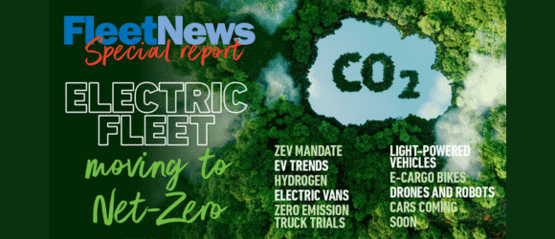




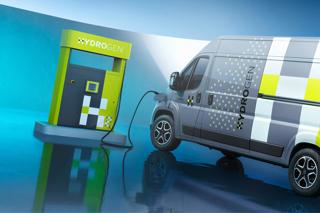
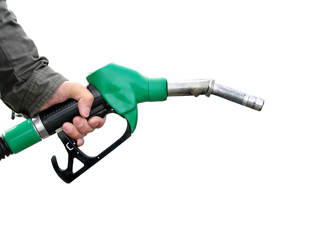
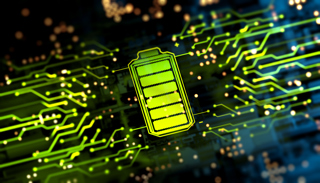
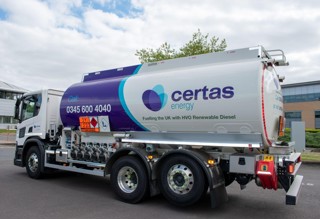










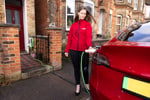


martinwinlow - 05/02/2025 14:51
"...while their efficiency is also far less affected by speed ... than a battery electric vehicle..." What utter and complete nonsense! Where on earth did you get this from?!! The only relevant issue re range 'at speed' is aerodynamic drag which applies to *any* vehicle no matter how it is fueled. "A lot of people are saying that by the time we get to 2030, the driving range of BEVs will be the same as they are for diesels,” says Miller. “That’s not going to happen." Really? A lot of (equally clueless) people said that EVs would not work *at all*, and look what has happened despite all those Luddites' (and Big Oil supporters') assertions. Besides, battery technology is *already* entirely adequate for LGVs that are operated lawfully as the enforced rest periods drivers must take are easily able to cover charging needs. What *is* missing is truck-capable rapid DC charging infrastructure but that is already being installed nationally and it does *not* rely on a swathe of technologies that simply do not exist yet, such that hydrogen will need. The EV charging distribution network is already 99% in place - it's called the National Grid! The practicalities of using H2 are *massively* more convoluted than the tiny glimpse this article provides. For example, the only mass-produced H2-powered vehicle thus far (the Toyota Mirai) will, if fully fueled and left parked, be effectively out of fuel 2 weeks later, such is the difficulty of containing the tiny H2 molecule and preventing it from escaping affordable H2 fuel tanks where it is pressurized to 10,000PSI (any less and the H2 is too bulky to be practical). The reality is that H2 will *never* make any headway against battery electric technology as the latter will simply advance far faster such that H2 will be quickly sidestepped as being completely unnecessary for all but exceptionally niche markets. Anyone with half an ounce of intelligence would realise this with just 20 minutes of research. The fact the our utterly idiotic government is willing to throw yet more millions down the drain (where *billions* has already been thrown by ours and other governments and businesses over the decades) merely demonstrates the power of vested interests in the oil industry (bearing in mind that 98% of H2 s currently derived from natural gas!!). You couldn't make it up!!